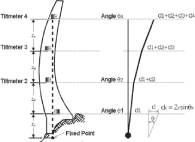Dams are remarkable civil engineering accomplishments that provide vital resources such as electricity and irrigation. In fact, most of the southwestern United States depends greatly on the power from the Hoover Dam. However amazing and sturdy as these structures are, they are actually constantly moving in very minuscule amounts of tilt. To be certain a dam is aging well, engineers need to effectively use tilt monitoring systems.
What Makes Dams Move?
Water pressure, gravity, and temperature all cause a dam’s figure to fluctuate, but perhaps the most concerning contributor is settlement. In the first few years after construction, the bedrock beneath the dam slowly contracts which can influence the dam’s structure. To be certain that the dam has a healthy lifespan, it’s up to engineers to ensure these very tiny movements do not develop into major ones.
1. Use 700 or 800 Series Tiltmeters to Make the Right Measurements
To accurately measure these fractions of degrees, a high precision electrolytic tiltmeter is needed. Sensors such as the 700 and 800 series have been used for decades to provide feedback to engineers on the activity of their creations. With a resolution as small as 0.1 µradian, these tiltmeters can capture movement that is too small to be noticed with the human eye.
2. How to Properly Install Tiltmeters on a Dam
To rig a dam with an accurate measurement system, a series of tiltmeters are typically mounted in a vertical section. In this way, deformation can be measured at a number of specific elevations relative to each sensor. See the figure to the right.
The deformation of the dam can be tracked on a regular basis at all hours of the day, in any weather condition. If the dam is aging like wine or not, the engineering team will know about it and can act accordingly. Take a look at Jewell’s advice on how to accurately take readings to get the most out of your tiltmeter every time you look at it.
As dams age, they will need to be continually monitored to verify their structural integrity. Tiltmeters can be conveniently retrofitted to most structures since they do not require excessive fixtures and can drive long cable lengths (>1000m). To clarify how to properly install your sensor, check out Jewell’s tech notes on how to mount 700 or 800 series tiltmeters.
Examples of This Monitoring System
Dams that use monitoring systems like this include Russell dam near Auburn, Georgia, Coolidge dam near Phoenix, Arizona, Hoover dam near Las Vegas, Nevada, and Boundary dam in northeastern Washington State, US.
Questions on how a tiltmeter can measure your next big project? Talk to us and we will find the right solution for you.

